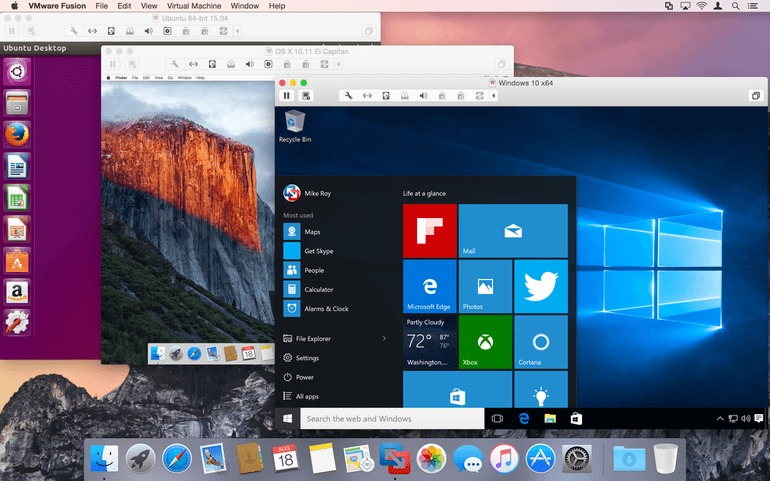

- #Vmware fusion mac dock install#
- #Vmware fusion mac dock software#
- #Vmware fusion mac dock trial#
- #Vmware fusion mac dock license#
#Vmware fusion mac dock trial#
(Presumably there will be a trial version once the final release comes out.)Ĭreating a new VM via VMware Fusion is a reasonable process if you’ve got installation ISOs:Īnd if you specify a custom virtual machine, you’ll see some common options: So if you want to try out the tech preview version, there’s no risk to do so right now. The final release is expected soon, but with that final release comes something that the tech preview doesn’t have: a price tag. While that support didn’t come nearly as fast as Parallels, it is at least here - in tech preview at least. It’s probably not surprising that VMware Fusion would also add support for M1 Macs. I do find myself using Parallels Access so that I can remotely connect to my M1 Mac via a web page (from Windows or MacOS).
#Vmware fusion mac dock license#
One other interesting thing to note: A license for Parallels Desktop also includes Parallels Toolbox, a collection of tools (kind of like “power toys” if you’re familiar with the term on Windows) that can be fairly handy, as well as Parallels Access for remote control.

My only complaint is that I would like to do PXE boot. What else is there to say? It does the job and does it reasonably well. It’s functional and pretty, and reflects the expected number of VMs that you’re likely to set up - single digits is going to be the norm, so something more visual is appropriate. Not sure what’s up with that, but at least you can attach ISOs and capture USB devices so that you can boot from media.Ĭontrolling existing VMs is done via the Control Center: Weirdly, even though I can configure the VM to specify that network (PXE) boot should be in the boot order, I can’t get that to show up in the Boot Manager menu. (I don’t expect to do any hard-code tasks in the VM, so as long as the VM is reasonably responsive I’m good.)Ĭonfiguration options in a VM are pretty much as expected:Īs I do a fair amount of work with bare metal imaging (yes, even on ARM64), I always want to see the firmware menus: How well does it work? I have no complaints - I can do everything I need in the Windows VM, and performance is quite reasonable. The Parallels Tools get updated any time Parallels Desktop gets updated, so I hadn’t started this VM since I last upgraded Parallels.) (Notice that my VM is labeled “Windows 10” - that was the current release when I first created the VM, and since it was an insider build, it has since upgraded to Windows 11.
#Vmware fusion mac dock install#
Once Windows 11 is installed, it will automatically install the Parallels Tools in the VM, to better integrate Windows 11 into your environment.

And of course it can download and install various flavors of Linux as well. to meet the Windows hardware requirements. To run Windows 11, it does provide the expected virtual TPM 2.0 support, UEFI, Secure Boot, etc.

It will even download the Windows 11 VHDX for you: Parallels goes out of its way to show Windows front-and-center, even though Microsoft barely supports this with a VHDX disk image of the latest ARM64 Windows 11 Insider Preview build. Next, you get a choice of OSes to install. As there can be a lot of confusion around what you can (ARM64) and can’t (Intel) emulate on an M1 Mac, Parallels needs to start with a screenful of information: You typically start off with a virtualization solution by creating a VM, so let’s start there. So what’s the difference? Let’s do a quick comparison.
#Vmware fusion mac dock software#
VMware then later released a tech preview for their own VMware Fusion software (free while in preview). Initially, the only option for running virtual machines on M1 Macs was Parallels Desktop, so that’s where I started. (You might think the first VM was a Windows VM, but that’s not the case, the first was a Fedora 34 Linux installation. Not surprisingly, the first thing I wanted to do on it was to run virtual machines. I have a Mac Mini with the original ARM-based M1 chip.


 0 kommentar(er)
0 kommentar(er)
